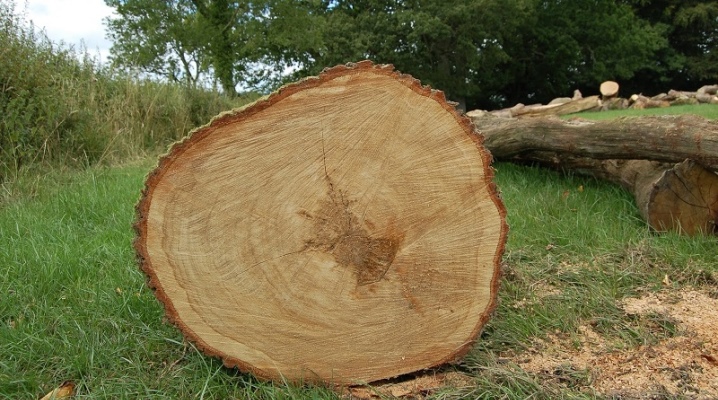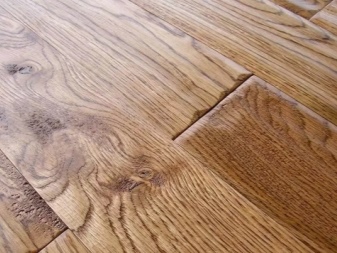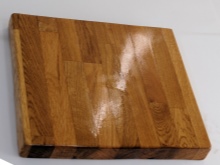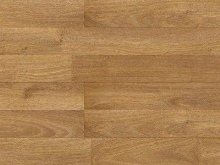All about oak wood

Oak invariably evokes associations with power, strength and health. Its wood has been valued at all times for its strength, density and durability. This material is resistant to moisture, it resists the action of fungus and retains its impeccable appearance for many decades of use.


Density and other characteristics
Oak is a long-lived tree, its age is far from being the limit. The height of the plant reaches 30 m, and the trunk diameter is 1.5-2 m.Oak wood can change its characteristics depending on the place of growth, however some common properties stand out:
- resistance to warpage and deformation;
- density;
- cutting resistance;
- hardness of tangential and radial types.


It is worth listing the average technical and physical characteristics of oak wood.
- Density (specific gravity) - is 550-700 kg / m3 for dry wood, in an air-dry state the average value is close to 700 kg / m3.
- Volumetric weight - with a moisture content of 10-15% a cube of dry wood weighs 700-800 kg, the mass of one m3 of freshly cut wood exceeds 1000 kg.
- Ultimate strength - in compression along the fiber line is 56 MPa, in static bending it approaches 87 MPa.
- Elastic modulus - 12.3 GPa. This parameter is considered the highest among all types of wood in the available price group, according to this indicator, oak wood is second only to Siberian larch.
- Natural humidity reaches 60%. Due to the increased natural density of oak wood, lumber in an undried state is characterized by a large weight. After drying, the weight is reduced - this greatly facilitates the transportation and handling of sawn timber.
- Chemical composition - the organic part of oak wood, which remains after the material burns out, includes alkaline earth and alkaline elements. Organic components contain cellulose (20-50%), tannins (2-10%), hemicellulose - 15-30%, lignin - 15-30%, as well as a small amount of resins, not exceeding 0.5-0.6% ...
- Hardness - end hardness of oak wood is 57.3 N / mm2, radial - 48.2 N / mm2, and tangential - 52.8 N / mm2.
- The shade range is wide - from almost white to almost black. The most common are grayish, brown and golden tones, there are no reds.
- The texture is porous, radial rays are clearly visible. It is such wood that is considered to be the reference and is imitated when creating artificial decorative coatings.


The high demand for oak wood is due to its exceptional performance characteristics:
- combustion temperature - 230 degrees in the presence of a flame source and 370 degrees with flameless heating;
- thermal conductivity - is 200/400 mW (m · K) across and along the fiber line, respectively;
- hygroscopicity - reduced;
- ash content - does not exceed 0.35%.
Another property of oak wood is of great interest - when it gets into a humid environment, it does not rot, like other tree species, on the contrary, it becomes more durable and acquires an almost black tint.
This tree is called "stained" wood.


Processing options
To increase the operational parameters, oak wood is subjected to primary and finishing processing. Dyeing of this material is almost never used; the main processing methods include:
- staining - aging in water, this technique allows you to give the wood a darker color and emphasize its spectacular texture;
- varnishing - usually used after staining to fix the resulting color;
- oil impregnation - used for individual decorative elements.



Comparison with other types of wood
Among all hardwoods, the most popular are ash, elm, beech, oak, and among conifers - larch. All other varieties either have insufficiently high operational parameters (such as pine), or are too expensive and therefore cannot be used for large-scale work. These include plums, pears or cherries, which are common in the creation of musical instruments. Oak and ash have a higher density, although ash is slightly harder and stronger than oak. Both rocks have similar texture, good thermal conductivity and flexibility.
They have received high marks for their resistance to moisture, which is especially appreciated when performing interior and exterior decoration of premises. All other breeds available in our country do not differ in this property, which significantly narrows the scope of their use. When choosing between oak and larch, first of all, one should proceed from the price. If you want to save money, it is better to give preference to larch, since oak lumber is much more expensive.
In addition, larch tends to spread a coniferous aroma in the room. These lumber releases phytoncides that have a health-promoting effect and create a pleasant atmosphere.



Species overview
There are several main types of oak wood. Let us give a brief description of them.
- White stone (upland) - grows on dry and sandy lands. Has a thickened, almost black bark and yellow-straw wood with a multilayer structure. The material has a high hardness, its elasticity is low.
- Iron (water) - grow on the banks of rivers and other bodies of water, found in alder bogs. The wood of such plants has light pink hues. It is a resilient and heavy material that can crack during drying.
- Stained - this wood has been aged in water for several years. It is distinguished by a dark, almost black color. Such a tree is easily subject to artificial aging. When burned, bog oak gives a lot of heat, but this will require maintaining a constant air draft, the resulting coal does not hold heat well.
- On the territory of the Caucasus and Crimea grows cork oak.



Applications
Oak wood is a valuable species. It undergoes drying, does not deform, does not lose its performance characteristics with use. Items made of oak can last up to 150 years. Let's dwell on the main areas of application of oak.
- Stained oak can be distinguished by its black color. It is widely used in the production of surfaces made from wood cuts.
- Bleached oak - recognized as a benchmark in parquet production. Planks made from other types of wood are often imitated under its texture.
- Suberic - Suitable for making shoe soles and wine bottle stoppers. Special cork rugs for the kitchen are made of this material.
- Mongolian - this oak is almost never used in construction, its use is limited by recipes of alternative medicine.
- Trimmed - such wood is represented by boards and is used in the manufacture of furniture, in the performance of construction and finishing works.
- Brushed - such a material looks artificially aged, it is obtained by removing all soft fibers from the surface of the material. Used to create decorative surfaces.
- Almost all types of oak wood are in demand for interior and exterior cladding... It is used to make pieces of furniture, window frames, door panels, as well as barrels, horse teams and carts.
- Due to its high moisture resistance petiolate (summer) oak is in demand in the industrial production of boats and underwater structures. Winter wood is more often used in joinery.



How to work with wood?
Any wood must be thoroughly dried in natural conditions before work. It is not worth accelerating this process, as this can cause cracking. The drier the wood, the more durable and resistant to decay it will be. There are "folk" methods that allow you to find out the moisture content of the wood offered in the store without special devices. To do this, on the planed side of the lumber, you should draw a strip with a chemical pencil. On dry wood, the color of the line remains unchanged, on underdried it will take on a purple hue. You can also determine the level of humidity by the sound of knocking on a wooden blank. In a raw tree, it is dull, in a completely dried tree, it is melodic and soft.
It is almost impossible to hammer a nail into an oak tree or screw in a screw, so it is advisable to pre-drill small holes. But the adhesive joints on the oak elements are held quite firmly.
The surface of the wood does not need staining, as oak naturally has a pleasant shade and stylish texture. This lumber is quite simple to varnish, preferably water-based.
















The comment was sent successfully.